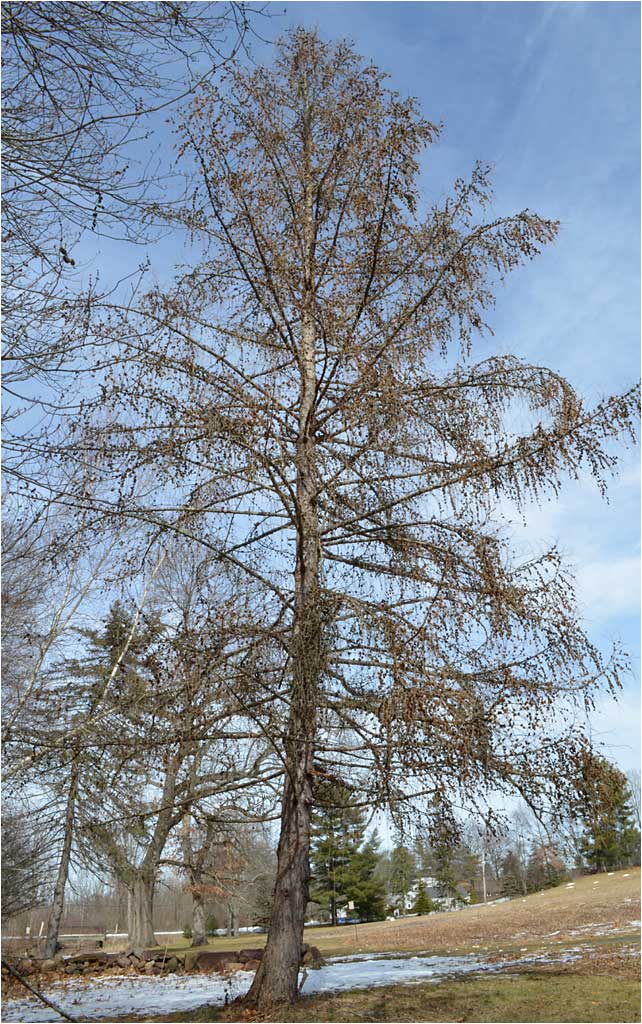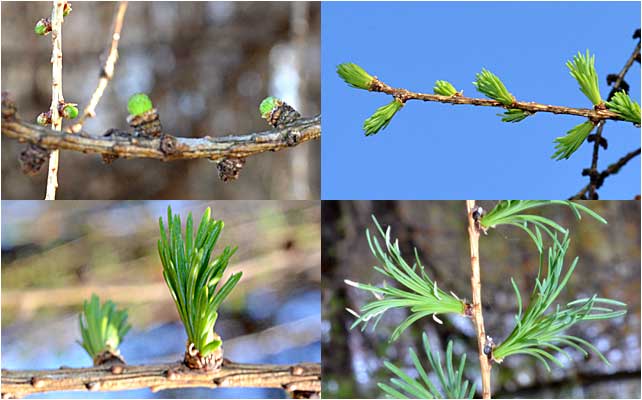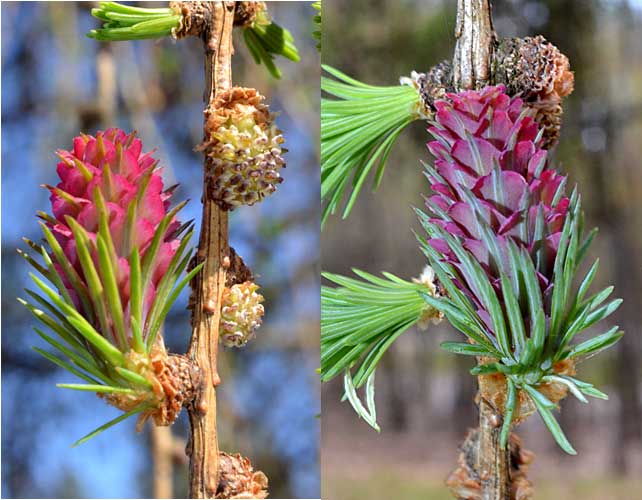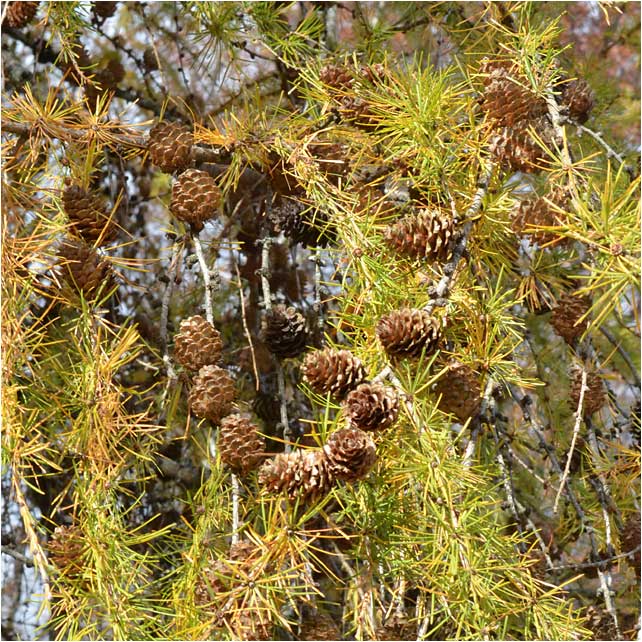54. EUROPEAN LARCH
Larix decidua

This European Larch is nearly 45 years old in 2023, and was planted by (then) Park Naturalist Joe Pratt, circa 1980. A real gem of the Arboretum, it is the third species of "deciduous conifer" found on the grounds. It joins Bald Cypress and Dawn Redwood, Deciduous conifers, unlike most evergreens (conifers), drop their needles every year.
EUROPEAN LARCH, BARK & CONES

The bark of European Larch is similar to many conifers with peeling grayish bark and showing reddish areas of inner bark. One very distinctive aspect is the amazing amount of new and old cones on the tree. European Larches keep their older cones for many years, perhaps even up to a decade, so even though it is Winter - the tree is still loaded with cones and is much different looking than the Bald Cypress (which looks bald) and the Dawn Redwood.
EARLY SPRING, EMERGING NEEDLES

A scenic progression for the growth of European Larch needles in early Spring. Clockwise: emerging growth, early expansion, fuller expansion, and almost mature. This process is repeated annually.
SPRING, MALES & FEMALES

European Larch is monoecious (M/F cones on every tree). The cones perform the same functions flowers do on deciduous trees. In both images you see the female cone (reddish), and also the smaller male cones. The females are only this color for a few weeks at most, and the amount of new cones is balanced with the retention of old cones. Quite remarkable.
SPRING/SUMMER

The European Larch tree looks like this from mid-Spring thru early Fall. The male cones are largely gone, but the new female cones are continuing to develop. The needles are providing energy and nutrients to the entire tree, roots included.
FALL SURPRISE

Just when you thought the Larch had settled into lush, green "evergreen" foliage, SURPRISE! Fall comes and the tree goes completely yellow. Pretty much a disaster for most conifers, but not deciduous conifers. This is the normal (and dramatic) Fall color change. Still lots of cones on the tree, yellow foliage, and lots of wispy stems combine for a very unique Fall look.
FALL (2)

Close-up of fall foliage for the European Larch at the Westmoor Arboretum. The cones featured are young, but the background contains, literally, thousands of older cones still on the tree.